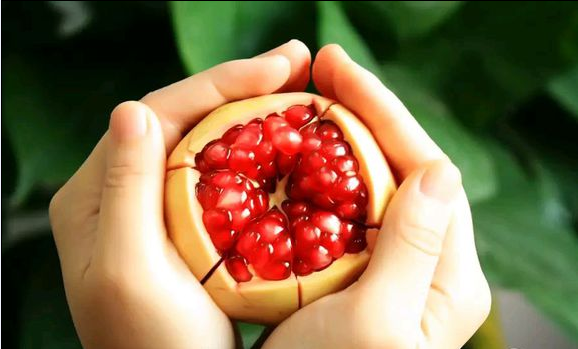The pomegranate, botanical name Punica granatum, is a fruit-bearing deciduous shrub or small tree in the familyLythraceae that grows between 5 and 8m (16 and 26 ft) tall.
A shrub or small tree growing 6 to 10m (20 to 33 ft) high, the pomegranate has multiple spiny branches, and is extremely long-lived, with some specimens in France surviving for 200 years.granatum leaves are opposite or subopposite, glossy, narrow oblong, entire, 3–7cm (1.2–2.8 in) long and 2cm broad. The flowers are bright red and 3cm in diameter, with three to seven petals.Some fruitless varieties are grown for the flowers alone.
The edible fruit is a berry, intermediate in size between a lemon and a grapefruit, 5–12cm (2.0–4.7 in) in diameter with a rounded shape and thick, reddish skin.The number of seeds in a pomegranate can vary from 200 to about 1400.Each seed has a surrounding water-laden pulp — the edible sarcotesta that forms from the seed coat — ranging in color from white to deep red or purple. The seeds are "exarillate", i.e., unlike some other species in the order, Myrtales, no aril is present. The sarcotesta of pomegranate seeds consists of epidermis cells derived from the integument.The seeds are embedded in a white, spongy, astringent membrane.
|  |
